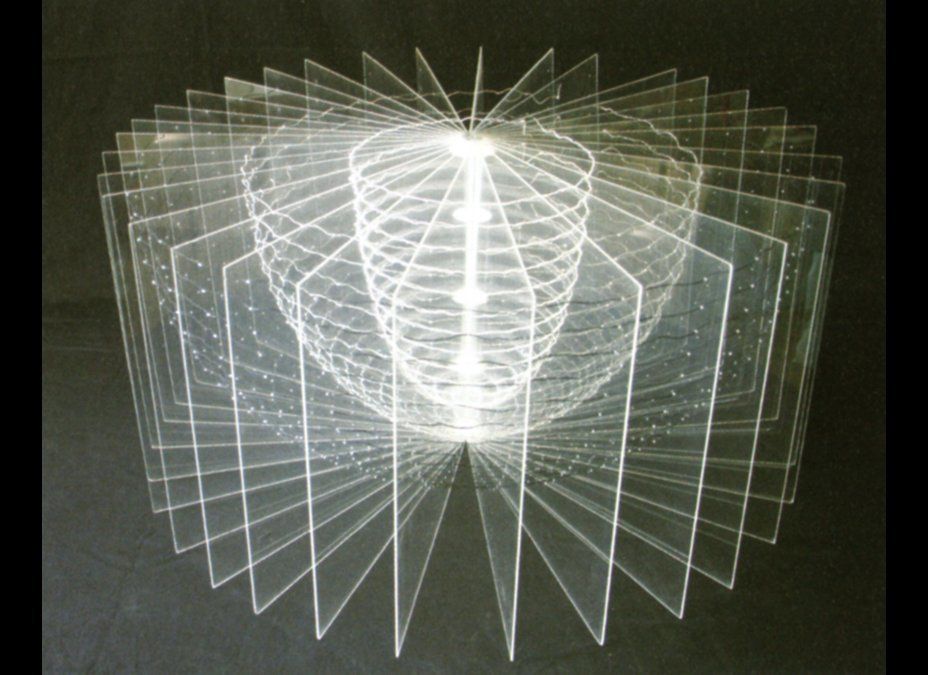Masters: Book Arts
By Eileen Wallace
Lark Books: Asheville, 2011.
ISBN-13: 9781600594977 (paper). 330pp. $24.95.
Masters: Book Arts by Eileen Wallace is an exhibit in book form that presents intriguing glimpses of the works of 43 book artists. Printed in full color on heavy coated matte stock, this large, solid book is satisfying to hold and read. The layout is lively but well-organized, with highly coherent use of editorial elements to chart a path through the luxuriant maze of book art. The photography is uniformly excellent. Vivid yet non-intrusive light and simple settings show the often complex works with obvious affection, but without over-dramatization. The text is factual, terse and sympathetic. Eileen Wallace, who is described as the curator rather than author or editor, remains decidedly in the background. Masters: Book Arts is easy to read and a pleasure to browse. The text informs rather than challenges, a very good thing, as the works themselves are challenging enough.
Few of those statements will apply to most of the works it contains, many of which strike me as anti-books that caricature the traditional book as either a sacred cow or a beautiful but meaningless artifact from some long-dead civilization. Some of them really don't even qualify as book-like, much less books. Appropriately, the works depicted here will be in museums and collections while Masters: Book Arts will be in libraries. Masters: Book Arts is a collaborative, corporate work of art. It does not possess what George Braziller described to me as the "singularity" of the artist's book, which is almost always the work of a single artist (or a very small group of collaborators) exercising the same control over the work that a painter exercises over a canvas.
The publisher's blurb for Masters: Book Arts says it "shows field-defining work from 43 master book artists." While these highly imaginative and beautifully executed works are worthy examples of book art, they hardly define the field. To the contrary, most are a subset of production aesthetic that Johanna Drucker described in "Critical Issues/Exemplary Works," her landmark Bonefolder article on setting parameters for curating and cataloging book art, as "book-like objects... sculptural and free-standing...usually not readable, containing very little content."
It's easy to ridicule innovative art, but I think it is fair to ask what works such as Adéle Outteridge's wordless constructions of Coptic-bound transparent acrylic pages have to do with books. They don't look like books. In these photographs, they look like lamps, as do some of the works of Margaret Couch Cogswell.
To me, all but a few of the works in Masters: Book Arts are not so much books, as statements about books. They are not meant to be read, but to be possessed, to provoke admiration and discussion, the ultimate coffee-table books. As a book artist dedicated to producing narrative works that mimic the style of industrially-produced books, I admire their craftsmanship and provocative spirit. As a writer, I find them entertaining but ultimately beside the point. As a graphic designer, I love them because graphic designers don't care about words except as shapes. Professional art critics, however, struggle to understand and define book art.
In a general sense, the sometimes baffling works in this catalog are perhaps best appreciated in the context of Marcel Duchamp's signed urinal. They are political (or philosophical, if you prefer) statements about the social meaning of art. This kind of book art can be seen as the latest development of the historical trend toward art that is defiantly meaningless except for its ability to annoy people by setting the latest Sotheby's price record. At its most meaningful, book art is, perhaps, funerary art. The book as we have known it is not yet on the endangered species list, but the current outlook is filled with gloom and doubt.
In the late '90s a subscriber to a discussion list for copy editors reported that a publishing marketing executive instructed a group of editors to consider books concrete blocks. He was not joking. The ideal book, in this sense, was all cover, no book. The packaging was far more important than the content. He was prophetic. Today, discarded books are raw material for sculptural book art, like the ancient gravestones used as paving blocks.
I'm a book artist myself, but my books look like ordinary trade books. One might say I make counterfeit books. They look exactly like "real" books. But the content and design are 100% mine. I am not interested in creating a new medium. I am interested in communicating with readers using the highest professional standards of traditional book design.
When I first saw altered books of artists such as Brian Dettmer I felt a deep, almost unspeakable revulsion for the desecration of the sacred totem that had defined my life and work. It took me a while to remember that books are routinely destroyed in the ordinary course of the publishing process. Publishers pulped an estimated 77 million unsold books in 2009. How long can a system survive that creates tons of lovingly crafted products that are trucked out to distribution points for exhibition and then returned and destroyed if unsold?
This negative cast of mind extended to much non-traditional book art, but when I put aside my prejudices, I found myself charmed and impressed, indeed, enchanted by these joyful works. Their superb craftsmanship, playful spirit and loving enthusiasm for the book as a cultural expression give me hope that what I -- and many others -- consider real books will continue to flourish and survive, for they are the true living spirit -- revered, if not read -- that book artists honor in this new kind of devotional art.
[This review originally appeared in the final issue of The Bonefolder, Volume 8, 2012.]

